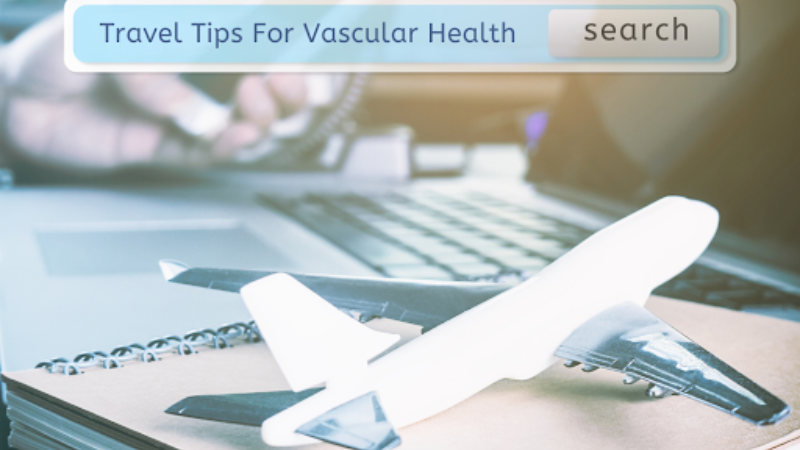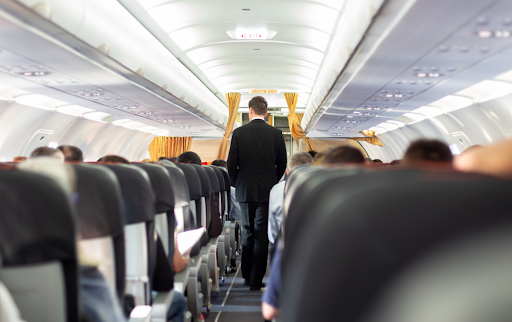Traveling with PAD can pose unique hurdles, but with careful planning and awareness, navigating airports, flights, and destinations can be a successful and enjoyable experience. This is especially true during longer flights, especially those exceeding four hours.
The most common type of PAD is lower-extremity PAD, which is why staying still for so many hours can be very painful and risky. PAD causes the arteries to narrow, making it difficult for blood to flow smoothly. Sitting on a plane, train, or car for a prolonged period of time could lead to aches, cramps, or even blood clots in the legs. If you’re a frequent traveler with PAD, you must make time to move your legs to avoid worsening your symptoms.
At USA Vascular Centers, our skilled vascular doctors are here to help you manage your PAD symptoms and prepare you for your upcoming travel.
In this article, we’ll explore travel tips for PAD patients to help you prepare for your next vacation before you book a flight, plan a road trip, or buy your train tickets.
Can You Fly With Peripheral Artery Disease?
Many patients wonder if it is safe to fly with peripheral artery disease (PAD). According to the American Heart Association, travel doesn’t need to be off-limits as long as you manage your PAD symptoms.¹
Before traveling, it is important to understand the potential risks of flying with PAD. Air travel typically means sitting in one seat for several hours without much movement. With extended periods of sitting, your blood flow decreases, and your risk of developing blood clots, also known as deep vein thrombosis (DVT), increases. DVT is a condition that occurs when a blood clot forms in a deep vein in the body, typically in the legs, arms, or pelvis area. This condition can lead to serious complications, such as pulmonary embolism and postphlebitic syndrome.
Additionally, being at a high altitude can also pose a threat if you have PAD. During your flight, the air within the cabin is pressurized to feel like oxygen levels at 6,000 to 8,000 feet above sea level. When the air is thin, and your body isn’t used to it, it puts added pressure on your heart to pump blood through your body.
If you are cleared for air travel, we recommend consulting with a healthcare provider for more guidance and travel tips for PAD patients. This will give you peace of mind and reassurance before you fly or drive the distance.
Recommended Products for Flying with PAD
Before you head to the airport or take off in the car, you’ll want to ensure you’ve brought everything you need to manage your PAD symptoms. Here are some of the items you may want to consider bringing:
- Medications: Any necessary medications should be in your carry-on. The American Heart Association also recommends bringing a copy of your prescription names and specific prescribed dosages in case you lose or forget your medication.¹
- Water: After you get through security, you’ll want to secure a large bottle of water or bring an empty water bottle to fill it, as higher altitudes can cause dehydration. Hydration is key for PAD management, as studies show proper hydration reduces claudication, also known as leg pain or weakness triggered by activity that ceases at rest.
- Compression socks: Some people with PAD wear compression socks to improve leg blood flow. Ask your doctor whether compression socks are right for you as they are not prescribed for all patients.
- Comfortable shoes: The right shoes can improve your travel experience and make traveling more comfortable. You want to make sure you wear shoes with extra cushioning if you wear them with compression socks.
Travel Tips for PAD Patients
Traveling and flying with PAD means being mindful about how you travel and taking certain precautions to stay safe. It is essential to know what you should bring, how you can prepare for a safe journey, and what you should do once you take off.
Here are seven travel tips for PAD patients before, during, and after the journey.
Tip #1: Move around the plane’s cabin as much as possible.
Note when the seatbelt sign is off so you know it’s safe to leave your seat. Ways of ensuring movement during your flight include:
- Walking up and down the aisles or stretching your legs. The Centers for Disease Control and Prevention recommends all travelers get up and move around every two hours. If you have PAD, consult with your physician, as you may need to get up more often to help your blood flow.
- Keep the area below the seat in front of you empty so that you can extend your legs forward. This will allow you to properly rotate your ankles and move your legs more freely. A quick exercise: Extend your legs straight out and pull your ankles toward you. Do this several times in a row.
- Pull your knees up to your chest and hold for 15 seconds. Do this several times.
Tip #2: Recognize the symptoms of blood clots ahead of your flight.
Because flying with PAD increases the risk of blood clots, being able to detect any early symptoms of clotting is essential. Symptoms of blood clots include:
- A change of skin color in the area affected
- Skin feeling warm in the area of the clot
- Trouble breathing
- Cramps in the area affected
- Pitting edema is an excess of fluid in the skin that causes noticeable swelling. When you press on the spot, pitting edema causes a dimple or indentation.
Tip #3: Avoid excessive sodium onboard.
Available foods while flying may have additional sodium content, so if possible, preparing your own healthier, low-sodium food ahead of your flight is your best option. Salt can cause plaque build-up and increase blood pressure, both of which put you at risk for PAD or exacerbate existing PAD symptoms.
Tip #4: Avoid alcohol consumption.
It’s best to avoid alcohol before and while flying, as it can further dehydrate you. Reach for a water bottle instead to quench your thirst.
#5: Stop to take walks during a road trip.
If you plan to travel by car, you’ll want to set aside time to take a walk and stretch your legs. Spending hours sitting in a car can cause swelling in the legs. This can increase your chances of DVT and worsen your PAD symptoms.
Make some time to walk around a park or at a rest stop. This can help lessen the swelling in your lower legs. If you’re sitting in the passenger seat, consider simple exercises like ankle circles or knee lifts to improve blood flow.
#6: Get your steps in on vacation.
Whether you’re traveling for work or leisure, you’ll want to ensure you’re still getting your steps in. The CDC recommends getting at least 10,000 steps a day.² This can lower your risk of chronic diseases and improve blood flow and circulation in your lower extremities.
#7: Arrive early.
If you plan to travel by plane or train, get to the airport or train station early. This will give you enough time to grab water and walk around before you board. A quick power walk can increase your heart rate and improve blood circulation. It can also help alleviate leg pain or cramping before sitting for a prolonged period of time.
Schedule a Consultation with USA Vascular Centers
USA Vascular Centers believes living with PAD shouldn’t stop you from traveling freely. Our skilled vascular doctors use minimally invasive techniques and advanced technologies to treat peripheral artery disease. Some non-surgical treatment options available include angioplasty, stent placement, or atherectomy. Many patients feel relief from their PAD symptoms in the days or weeks after their treatment. Call us at 888.723.2193 or make an appointment with one of our specialists today.
Frequently Asked Questions About Traveling and Flying with PAD
Can you fly with peripheral artery disease?
Yes. Individuals with PAD can safely fly and travel while taking the necessary precautions. The best way to manage your PAD symptoms while traveling is to stay hydrated and move. If you’re worried about worsening your symptoms while traveling, schedule an appointment with a vascular specialist or a healthcare professional for more tips and guidance.
Is it safe to fly with clogged arteries?
If you have clogged arteries, be mindful of your symptoms before boarding a plane. If you notice any shortness of breath or other continuing symptoms, you’ll want to speak to a vascular specialist before traveling to ensure you’re fit to fly.
Does flying affect blood circulation?
While flying, individuals move their legs less. The lack of movement can increase your risk of blood clots in the legs and can lead to conditions such as deep vein thrombosis. The best way to prevent these symptoms is to move around the cabin and try simple leg exercises while sitting in your seat.
What Are the Best Ways to Keep Blood Circulating During a Flight?
If you can’t move around the cabin during the flight, you can try simple in-seat exercises to help improve blood circulation. Some popular ones include knee lifts, ankle circles, and leg extensions.
Should I Consult My Doctor Before Booking a Flight?
It’s always best to schedule an appointment with a vascular specialist to avoid worsening your PAD symptoms. Your medical provider will also provide expert recommendations to ensure your traveling experience is safe and painless.
Sources Cited
- “Travel and Heart Disease.” American Heart Association, January 16 2024, https://www.heart.org/en/health-topics/consumer-healthcare/what-is-cardiovascular-disease/travel-and-heart-disease
- Opportunities for Increased Physical Activity in the Workplace: the Walking Meeting (WaM) Pilot Study, Miami, 2015, https://www.cdc.gov/pcd/issues/2016/pdf/16_0111.pdf






